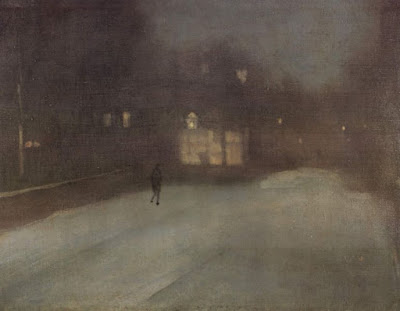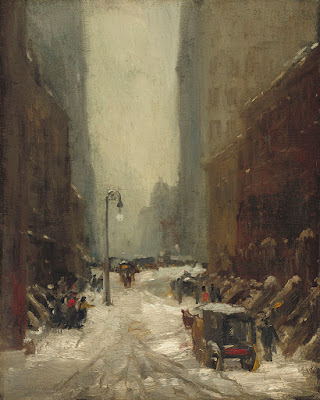The public’s embrace of plein air painting tells us that our audience, too, is hungry for a good story.
 |
|
The Veteran in a New Field, 1865, by Winslow Homer, courtesy Metropolitan Museum of Art. Painted at the end of the Civil War, it’s a poignant metaphor for the coming demilitarization. |
The human mind is hardwired for narrative. Long before the written word was developed, our paleolithic ancestors were telling stories on cave walls. Imagination is fundamental to human life.
“Narrative painting” simply means that the painting tells a story. During most of art history, that was the norm. A narrative painting can illustrate a cycle of ideas, as did Egyptian tomb frescoes or Michelangelo’s ceilings in the Sistine Chapel. Or, a narrative painting can illustrate a single moment, as does Sandro Botticelli’s The Birth of Venus.
While narrative painting is well suited for mythology and religion, it was also used to transmit historical ideas. The Death of General Wolfe, for example, is a 1770 painting by Benjamin West that commemorates the deciding affray in the struggle between Britain and France for control of the New World. It could also be propaganda, as with Ingres’ Napoleon I on his Imperial Throne. And it was used to convey moral truths ranging from early Renaissance genre paintings to the great French Social Realist art.
 |
|
Haymaking (Les Foins), 1877, Jules Bastien-Lepage, courtesy Musée d’Orsay |
And then came the Cult of Genius, when artists shifted from being craftsmen to being intellectuals. That was a product of the Age of Enlightenment, and among other ideas, it gave us the concept of the enfant terrible, offensive, rebellious artist. In fact, this individualism was so popular that it earned a label: Bohemianism.
The phrase “Art for art’s sake!” meant that all ‘true’ art should be divorced from moralizing, instructive, political, or utilitarian functions. In short, it was art only when it was useless, practically speaking.
“Art should be independent of all claptrap — should stand alone… and appeal to the artistic sense of eye or ear, without confounding this with emotions entirely foreign to it, as devotion, pity, love, patriotism and the like,” wrote James Abbott McNeill Whistler.
 |
|
Cromwell and the corpse of Charles I, 1831, Paul Delaroche courtesy Musée des Beaux-Arts de Nîmes |
Pure art would be art that resonated with all people, regardless of their language, histories, or creeds. That idea marks the beginning of modern art. Since it allowed for the development of Impressionism and other forms of modern painting, it was extremely useful. But like all good ideas elevated to the point of religion, it eventually became an impediment to creativity. Much of human understanding lies in culturally-derived images. The cognoscenti may understand the meaning of a pile of bricks on the floor, but the average viewer doesn’t, and doesn’t want to.
(And of course, the cognoscenti was just replacing one set of images with another, with the added insult of being exclusionary. Either you pretended to understand, or you marked yourself out as uncouth.)
Paintings which told a story were either from the dustbin of history, or the province of those odd American realists, the Wyeths. This was the world in which I came of age as a painter. I’m a natural-born storyteller, so it’s no surprise that I didn’t know what the heck I was doing, or where I belonged.
Then came the post-modern era, which we could call “meaning without art.” Extracting a scroll from one’s vagina, vomiting paint, or defacing a First Folio of Goya’s Disasters of War may have seemed witty, but hardly required skill or craftsmanship.
In the post-post-modern era, plein air painting—an exercise in realism—is one of the most significant art movements, despite being largely ignored by art institutions. Most plein air painters are didactic by nature. We are speaking about our love of nature, the fragility of our world, and more. The public’s embrace of plein air painting tells us that our audience, too, is hungry for a good story.


























